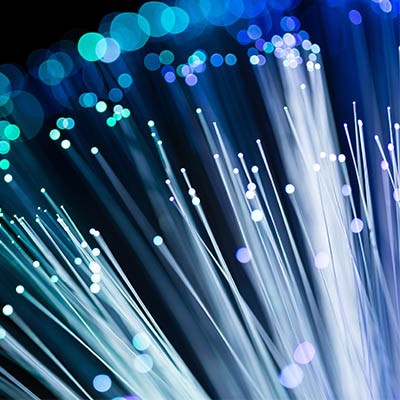Directive Blogs
Getting to Know Technology: Fiber Optics
As hokey as it sounds, the Internet almost transcends other pieces of technology. While estimating the economic impact of the Internet is a formidable feat, Cisco came up with 19 trillion dollars - 21 percent of all the money in the world. So, with access to a resource this valuable, it’s silly not to make the most of it.
Fiber optic cabling can help everyone to do so. A type of network cable, fiber optic cables contain tiny strands of glass fibers, each wrapped in an insulated casing. These fibers, not much thicker than a human hair, transmit data by providing a pathway for it to travel through. These signals are maintained by the light being reflected by the cladding - a layer of glass that surrounds the core to insulate it.
As you may imagine, this is a very efficient way to transmit data - light is famous for being fast, after all. Furthermore, fiber optic cables can support a higher bandwidth as well as keep transmitted data more stable over longer distances. Now, a lot of the infrastructure that we use every day is supported by fiber optic cabling - including a lot of the Internet, telephone systems, and cable television.
The benefits of using fiber optic cabling include:
- Higher Data Capacities - A fiber optic cable is capable of carrying far more data than copper cables could. Fiber cables can transmit 10 Gbps, 40 Gbps, and 100 Gbps.
- Longer Distance - Light can go much further without losing its strength, eliminating the need for as many signal boosters.
- Less Interference - By its nature, copper cabling is susceptible to external electromagnetic interference, and the shielding that is implemented to prevent this interference isn’t always effective. Fiber optic cable isn’t susceptible, and so interference of this kind isn’t a problem.
This makes fiber-optic cabling the preferred choice for long-distance connections, but some Internet providers use it for direct access for customers. Here are the ways these cables are deployed:
- Fiber to the Premises (FTTP) - Fiber used to deliver media services to residential buildings.
- Fiber to the Building/Block/Premises (FTTB) - This is fiber optic cables used to support commercial buildings.
- Fiber to the Curb of a Node (FTTC/N) - This cable is connected to a node, which then uses copper cables to connect to customers.
- Direct fiber - The is fiber optic cable that runs directly from the central hub to the customer, which costs a pretty penny.
- Shared fiber - Essentially the same as direct fiber, but split to serve multiple customers.
While it is possible to get a fiber optic connection to your business, it is extremely expensive to do - prohibitively expensive, in fact. With the costs that it comes with, it may only become an option if your provider is actively rolling out a new infrastructure.
To learn more about the technology that powers today’s businesses, and how you can put it to use for you, keep reading our blog!



Comments